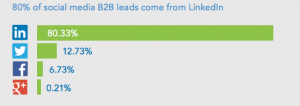by Gord Hotchkiss, Featured Contributor, August 30, 2016
Far be it from me to let a theme go before it has been thoroughly beaten to the ground. This column has hosted a lot of speculation on the future of advertising and media buying — and today, I’ll continue with that theme.
First, let’s return to a column I wrote almost a month ago about the future of advertising. This was a spin-off on a column penned by Gary Milner, “The End of Advertising as We Know It.” In it, Milner made a prediction: “I see the rise of a global media hub, like a stock exchange, which will become responsible for transacting all digital programmatic buys.”
Milner talked about the possible reversal of fragmentation of markets by channel and geographic area, due to the potential centralization of digital media purchasing. But I see it a little differently than he does. I don’t see the creation of a media hub — or, at least, that wouldn’t be the end goal. Media would simply be the means to the end. I do see the creation of an audience market based on available data. Actually, even an audience would only be the means to an end. Ultimately, we’re buying one thing: attention. Then it’s our job to create engagement.
The Advertising Research Foundation has been struggling with measuring engagement for a long time now. But the struggle was due to the fact that the foundation was trying to measure engagement on a channel-by-channel basis, and that’s just not how the world works anymore.
Take search, for example. Search is highly effective at advertising, but it’s not engaging. It’s a connecting medium. It enables engagement, but it doesn’t deliver it.
We talk multichannel a lot, but we talk about it like the holy grail. The grail in this cause is an audience likely to give us their attention and, once they do that, is likely to become engaged with our message. The multichannel path to this audience is really inconsequential. We only talk about multichannel now because we’re stopping short of the real goal: connecting with that audience.
What advertising needs to do is give us accurate indicators of those two likelihoods: how likely an audience is to give us their attention, and what is their potential proclivity towards our offer.
The future of advertising is in assembling audiences — no matter what the channel — who are at a point where they are interested in the message we have to deliver.
This is where the digitization of media becomes interesting, not because it’s aggregating into a single potential buying point, but because it’s allowing us to parallel a single prospect along a path of persuasion, getting important feedback data along the way.
In this definition, audience isn’t a static snapshot in time. It becomes an evolving, iterative entity. We have always looked at advertising on an exposure-by-exposure basis. But if we start thinking about persuading an audience, that paradigm needs to be shifted. We have to think about having the right conversation, regardless of the channel that happens to be in use at the time.
Our concept of media happens to carry a lot of baggage. In our minds, media is inextricably linked to channel. So when we think media, we are really thinking channels. And, if we believe Marshall McLuhan, the medium dictates the message. But while media has undergone intense fragmentation, it has also become much more measurable, and thus more accountable. We know more than ever about who lies on the other side of a digital medium, thanks to an ever-increasing amount of shared data. That data is what will drive the advertising marketplace of the future. It’s not about media; it’s about audience.
In the market I envision, you would specify your audience requirements. The criteria used would not be so much our typical segmentations — demography or geography, for example. These have always just been proxies for what we really care about: an audience’s beliefs about our product, and predicted buying behaviors. I believe that, thanks to ever-increasing amounts of data, we’re going to make great strides in understanding the psychology of consumerism. These strides will be foundational in the audience marketplace of the future. Predictive marketing will become more and more accurate and allow for increasingly precise targeting on a number of behavioral criteria.
Individual channels will become as irrelevant as the manufacturer that supplies the shock absorbers and tie rods in your new BMW. They will simply be grist for the mill in the audience marketplace. Martech and ever-smarter algorithms will do the channel selection and media buying in the background. All you’ll care about will be the audience you’re targeting, the recommended creative (again, based on the martech running in the background), and the resulting behaviors. Once your audience has been targeted and engaged, the predicted path of persuasion is continually updated, and new channels are engaged as required. You won’t care what channels they are — you’ll simply monitor the progression of persuasion.
MediaPost.com: Search Marketing Daily
(56)







